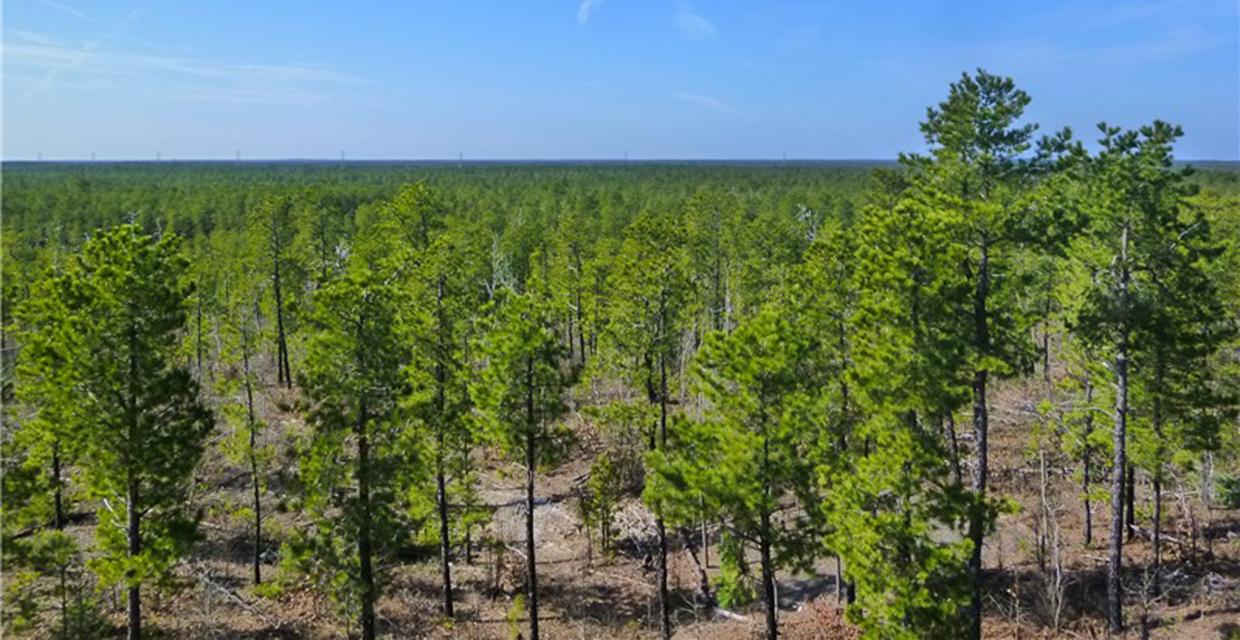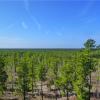Park at the nature center parking lot. Facing in the direction of the nature center, turn right towards the kiosk and information boards. Although you won’t see a blaze yet, the trail starts behind the kiosk, confirmed by a blue blaze a few trees in. You will find this trail to be very well blazed with signs at intersections showing which “road” you will be crossing. Don’t worry, you won’t...
Hike Description:
Park at the nature center parking lot. Facing in the direction of the nature center, turn right towards the kiosk and information boards. Although you won’t see a blaze yet, the trail starts behind the kiosk, confirmed by a blue blaze a few trees in. You will find this trail to be very well blazed with signs at intersections showing which “road” you will be crossing. Don’t worry, you won’t find any cars on these roads, they are merely old sand roads with names.
A short distance ahead the blue-blazed Tindey Trail splits. You can go either way but for this hike veer to the right. The pleasant pine needle covered sand trail meanders along pine trees, which provide greenery even in the dead of winter. You will soon cross over several of the named sand roads - Tamarack Road, Chestnut Street and Daisy Road – within the first half mile. Another half mile later, cross over the red-blazed Spruce Street. A left turn on Spruce Street would bring you back to the parking lot in .3 mile for a truncated version of this hike, but keep straight on the blue-blazed Tindey Trail.
Shortly after crossing a bridge, keep straight through the intersection with Sugar Sand Road. Pine Street will be the last crossing for a while. A right turn on Pine Street would bring you into the backside of Double Trouble State Park where you would find a network of unmarked sand roads, all eventually impassable due to swamps flooding over the roads or dead ends. This area is predominantly used for hunting so unless it’s a Sunday during hunting season, it would not be a good idea to go exploring in that area. Jakes Branch County Park does not allow hunting.
Continuing straight ahead on the blue-blazed trail, watch for a white-blazed side trail around the 2.65-mile point. Turn right on this trail, cross over a bridge and arrive at a small creek in .2 mile. This is a new trail, not shown on the online map, although it is represented on the hard copy map available at the kiosk or in the nature center. Retrace your steps back to the blue trail and turn right.
Traffic sounds will become louder and for a brief stretch you will be able to see the Garden State Parkway to the right through the trees. Cross over two consecutive bridges as you veer away from the parkway sounds. The nature center will soon come into view, looming above the pine trees. Cross over the other end of the red-blazed Spruce Street continuing on the blue-blazed trail.
At 4 miles, arrive at the fork where the hike started, veer to the right and head back to the parking lot.
Do take a moment to visit the 5-story high observation deck at the nature center. Interior steps pass interesting displays as you ascend to the top. An elevator is also available. From the viewing deck observe the endless sea of pine trees where you hiked, a glimpse of historic Hangar One at Lakehurst Air Naval Station - a site perhaps most notorious for the Hindenburg tragedy of May 6, 1937, and the Forked River Mountains on the horizon with the highest “mountain” at 184 feet above sea level.
Turn By Turn Description:
[ 0.00] Start at the kiosk at the end of the parking lot closest to the nature center; right at fork
[ 0.10] Cross Tamarack Road (sand road)
[ 0.20] Cross Chestnut Street (sand road)
[ 0.40] Cross Daisy Road (sand road)
[ 0.95] Cross red-blazed Spruce Street (sand road)
[ 1.10] Cross Sugar Sand Road (sand road)
[ 1.30] Cross Pine Street (sand road)
[ 2.65] Turn right on white-blazed trail; cross foot bridge
[ 2.85] White trail ends at creek/swamp; retrace back to blue trail
[ 3.05] Cross foot bridge; turn right on blue Tindey Trail
[ 3.35] Cross two bridges
[ 3.80] Cross red-blazed Spruce Street (sand road)
[ 4.00] Arrive back at parking lot


Take a pleasant hike on level packed sand, pine needle covered trails through the New Jersey Pine Barrens with views from the 5-story observation deck at the nature center.
Hike Checklist:
Whether you are going for a day hike or backpacking overnight, it is good practice to carry what we call The Hiking Essentials. These essentials will help you enjoy your outing more and will provide basic safety gear if needed. There may also be more essentials, depending on the season and your needs.
The Essentials
Hiking Shoes or Boots
Water - Two quarts per person is recommended in every season. Keep in mind that fluid loss is heightened in winter as well as summer. Don't put yourself in the position of having to end your hike early because you have run out of water.
Map - Know where you are and where you are going. Many of our hiking areas feature interconnecting network of trails. Use a waterproof/tear-resistant Tyvek Trail Conference map if available or enclose your map in a Ziplock plastic bag. If you have a mobile device, download Avenza’s free PDF Maps app and grab some GPS-enhanced Trail Conference maps (a backup Tyvek or paper version of the map is good to have just in case your batteries die or you don't have service). Check out some map-reading basics here.
Food - Snacks/lunch will keep you going as you burn energy walking or climbing. Nuts, seeds, and chocolate are favorites on the trail.
Sunscreen and insect repellent
Rain Gear and Extra Clothing - Rain happens. So does cold. Be prepared for changing weather. Avoid cotton--it traps water against your skin and is slow to dry. If you are wearing wet cotton and must return to your starting point, you risk getting chills that may lead to a dangerous hypothermia. Choose synthetic shirts, sweaters and/or vests and dress in layers for easy on and off.
Compass - A simple compass is all you need to orient you and your map to magnetic north.
Light - A flashlight or small, lightweight headlamp will be welcome gear if you find yourself still on the trail when darkness falls. Check the batteries before you start out and have extras in your pack.
First Aid Kit - Keep it simple, compact, and weatherproof. Know how to use the basic components.
Firestarter and Matches - In an emergency, you may need to keep yourself or someone else warm until help arrives. A firestarter (this could be as simple as leftover birthday candles that are kept inside a waterproof container) and matches (again, make sure to keep them in a waterproof container) could save a life.
Knife or Multi-tool - You may need to cut a piece of moleskin to put over a blister, repair a piece of broken equipment, or solve some other unexpected problem.
Emergency Numbers - Know the emergency numbers for the area you're going to and realize that in many locations--especially mountainous ones, your phone will not get reception.
Common Sense - Pay attention to your environment, your energy, and the condition of your companions. Has the weather turned rainy? Is daylight fading? Did you drink all your water? Did your companion fail to bring rain gear? Are you getting tired? Keep in mind that until you turn around you are (typically) only half-way to completing your hike--you must still get back to where you started from! (Exceptions are loop hikes.)
Check the weather forecast before you head out. Know the rules and regulations of the area.
The Leave No Trace Seven Principles
Plan Ahead and Prepare
- Know the regulations and special concerns for the area you'll visit.
- Prepare for extreme weather, hazards, and emergencies.
- Schedule your trip to avoid times of high use.
- Visit in small groups when possible. Consider splitting larger groups into smaller groups.
- Repackage food to minimize waste.
- Use a map and compass to eliminate the use of marking paint, rock cairns or flagging.
Travel and Camp on Durable Surfaces
- Durable surfaces include established trails and campsites, rock, gravel, dry grasses or snow.
- Protect riparian areas by camping at least 200 feet from lakes and streams.
- Good campsites are found, not made. Altering a site is not necessary.
- In popular areas:
- Concentrate use on existing trails and campsites.
- Walk single file in the middle of the trail, even when wet or muddy.
- Keep campsites small. Focus activity in areas where vegetation is absent.
- In pristine areas:
- Disperse use to prevent the creation of campsites and trails.
- Avoid places where impacts are just beginning.
- Pack it in, pack it out. Inspect your campsite and rest areas for trash or spilled foods. Pack out all trash, leftover food and litter.
- Deposit solid human waste in catholes dug 6 to 8 inches deep, at least 200 feet from water, camp and trails. Cover and disguise the cathole when finished.
- Pack out toilet paper and hygiene products.
- To wash yourself or your dishes, carry water 200 feet away from streams or lakes and use small amounts of biodegradable soap. Scatter strained dishwater.
- Preserve the past: examine, but do not touch cultural or historic structures and artifacts.
- Leave rocks, plants and other natural objects as you find them.
- Avoid introducing or transporting non-native species.
- Do not build structures, furniture, or dig trenches.
- Campfires can cause lasting impacts to the backcountry. Use a lightweight stove for cooking and enjoy a candle lantern for light.
- Where fires are permitted, use established fire rings, fire pans, or mound fires.
- Keep fires small. Only use sticks from the ground that can be broken by hand.
- Burn all wood and coals to ash, put out campfires completely, then scatter cool ashes.
- Observe wildlife from a distance. Do not follow or approach them.
- Never feed animals. Feeding wildlife damages their health, alters natural behaviors, and exposes them to predators and other dangers.
- Protect wildlife and your food by storing rations and trash securely.
- Control pets at all times, or leave them at home.
- Avoid wildlife during sensitive times: mating, nesting, raising young, or winter.
Be Considerate of Other Visitors
- Respect other visitors and protect the quality of their experience.
- Be courteous. Yield to other users on the trail.
- Step to the downhill side of the trail when encountering pack stock.
- Take breaks and camp away from trails and other visitors.
- Let nature's sounds prevail. Avoid loud voices and noises.
The Trail Conference is a 2015 Leave No Trace partner.
(c) Leave No Trace Center for Outdoor Ethics: www.LNT.org.


